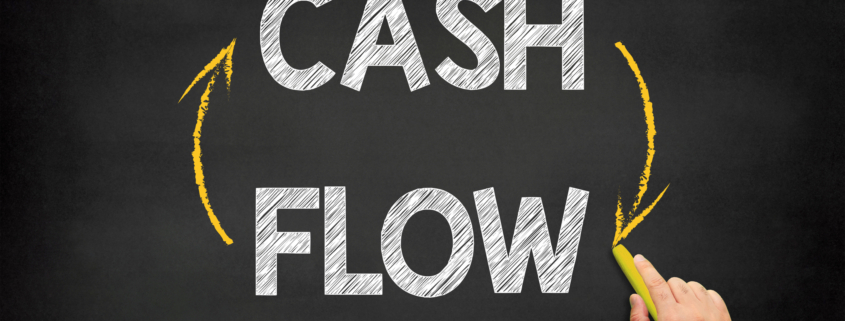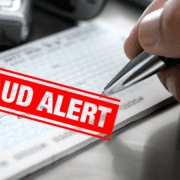Cash Flow Forecasting – It’s Hard and You Need It
A common thread among so many businesses we meet is that they struggle to forecast their cash flow. I’m not going to use all the clichés about cash – we can agree it is vital. We can also agree that it is never static. Cash flow itself is a living breathing organism that ebbs and flows with the movements of your business and the intricacies therein. Unfortunately, too many companies either give up because trying to forecast is hard, or they utilize an ineffective version of it. Even more sophisticated businesses can struggle here. We’ve seen instances where commitments are made, or payment schedules put in place that aren’t doable in reality. Few small businesses are so predictable where this tool is not mission critical. And chances are, your business is not one of them. With a cash flow forecast process, those broken commitments could be avoided. Here’s what you need to know.
It is a Must
Absent cash flow forecasting, it is just too easy to get blindsided by a cash crunch. We have seen too many examples of this. And remember, cash flow is so often about timing. Even if on the surface the water looks calm, a payroll week could line up with a tax payment and a payment to a big vendor and you could find yourself in trouble. Can you see that problem coming in advance? You need to be able to do that. Cash flow issues can rarely be solved in the short term. It is that visibility into the future that allows you to take action today to avoid that potential crunch. Many businesses will look at their bank account frequently, the problem is that tells you very little. What checks might be outstanding? What must go out this week, next week and the week after? What about collections? Looking at the bank account only is no different than checking the fuel gauge in your car without any consideration of where you are going or where the next gas station is. You wouldn’t get a huge comfort level from that, so why would cash in the bank do any better?
It’s Not Easy
Forecasting cash flow is more art than science. Sure, you can leverage the current state of Accounts Receivable, Accounts Payable, Vendor and Customer POs and predictable monthly expenses. But what about key context? Maybe a key customer is delayed in paying you during a certain window. Maybe you have a big one-time payment that fell off your radar. Seasonality can play a key factor too as the peaks and valleys can get very extreme at times. Maybe your business has to stock up on inventory over the summer to execute on sales in Q3 and Q4. Can you see that picture in front of you? One best practice is to get all the information you have laid out on paper and then take a step back and do a gut check. Does what you are seeing feel right?
Look at Your Assumptions
Do your customers pay you on time? If they don’t and you are forecasting based on your invoice terms, you are going to have a forecasting miss. What cadence do you use to pay your bills? We worked with a business that was paying their bills on a certain cadence every two weeks, meaning some bills would be paid a week or 10 days early. Add to that the fact that their customer terms were Net 30, but they were collecting in more like 37 days. Putting this on paper allowed that business to see how much cash flow they could create by tightening up both ends of that spectrum, and the cash flow impact was on average over $150,000. They didn’t create more cash out of nothing, they used forecasting tools to manage their cash more wisely to put them in the best position possible, literally seeing the impact of their decisions in advance. And it highlighted for them breakdowns in process and the need for new ones. There can also be irregular payments – quarterly, annual, or otherwise. Do you have a list of these somewhere, so they don’t fall out of sight? And don’t forget things like tax payments – Uncle Sam should always be on your radar.
Beware the Overreliance on the Past
As I mentioned earlier, businesses are very fluid. While the past can be indicative of the future, it can also create false positives/negatives. Maybe payroll is stable, but you had a huge quarter resulting in much higher-than-expected commissions. Perhaps T&E spending has been creeping up and suddenly, the corporate credit card bill is materially higher. Or maybe, and most dangerously, you are just looking at what you have been collecting on average per week so far this year. Your current AR balance could be above or below average, or you could have a large customer with open invoices that might pay you late. What might feel like a security blanket could quickly leave you out in the cold. You can use past data points in your assumptions but be sure to review them occasionally. And have a feel for the numbers underneath the numbers in AR, AP, revenue, payroll, etc.
As a business leader, you need to create the expectation of your finance team that they produce a cash flow forecast, at least bi-weekly if not weekly. If they can’t, seek help to do so. This is one of the most critical tools for a business to use. I have had to look no further than a CEO that has been used to a cash flow forecast and then it ceases for whatever reason. One of those CEOs described himself as “completely blind” as a result. Yes, it is hard, but the power of taking control of cash, telling it where to go, illuminating underlying business issues and allowing for a better night’s sleep has made the difference for so many CEOs. It can for you too.











